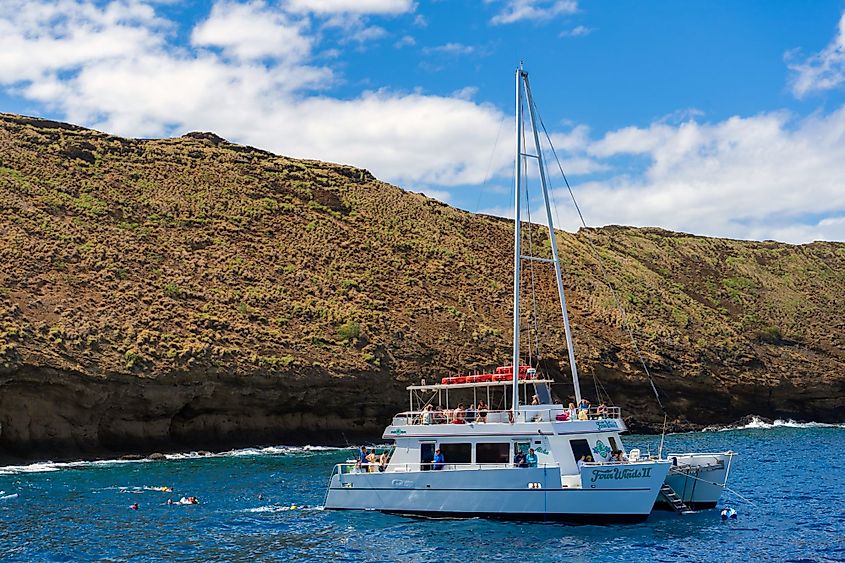
Molokini Crater
Molokini Crater is an iconic crescent-shaped volcanic crater forming an uninhabited islet in the Alalakeiki Channel off Maui’s coast. The volcanic crater, created over 200,000 years ago, is located in Maui County, Hawaii, between two of the state's eight major islands; Kaho’olawe and Maui. It is located approximately 2.5 miles off Makena State Park’s west and Ma’alaea Bay’s south. Molokini is an important area for marine life and a popular snorkeling and scuba diving destination because of its calm and clear water. It also serves as Hawaii State Seabird Sanctuary. The islet covers approximately 9.3 hectares and has a diameter of 0.4 miles and a maximum height of 161 feet.
Geography

The Molokini Crater is a sunken volcanic crater whose one side is submerged in water. The crater was initially thought to have formed about 50,000 years ago. However, recent studies indicate that it was formed through a volcanic eruption about 230,000 years ago. The eruption was caused by the movement of the Maui landmass over hot spots in the tectonic plates. According to available evidence, Molokini may have erupted concurrently with the eruptions along the Haleakala rift zone. Molokini is a loop-sided crater lacking the northern wall, with the crescent-shaped southern wall often blocking most of the wave actions.
Mythology
According to native Hawaiians, Pele, the fire goddess, and Molokini both fell in love with a prince. However, the prince fell in love with another woman believed to be Molokini. Pele, who was unpleased by the prince and the other woman, decided to take revenge. According to most sources, Pele cut the woman into two pieces and threw them into the ocean. The woman's head became the Pu’u Olai (Makena Beach’s cinder mound), and her body is the Molokini Crater. Other sources indicate that it was actually the prince who was cut into two.
Ecology

The large coral reef at the Molokini Crater is a haven for most marine life in the area, with the waters around the crater protected as Marine Life Conservation District. The crater contains over 250 marine fish species, including Moorish idol, black triggerfish, parrotfish, yellow tang, Bluefin trevally, and raccoon butterflyfish. Moray eels and Whitetip reef sharks occasionally visit the area. Besides the fish species, Molokini Crater is also home to about 38 coral species and over 100 algae species. The land nearby land is designated a state bird sanctuary, hosting species such as wedge-tailed shearwaters, great frigatebirds, and Bulwer’s petrels.
Recreation And Concerns

The Molokini Crater attracts over 300,000 tourists annually, making it one of Hawaii’s most popular destinations. The crater is popular snorkeling, snuba, and scuba diving destination. According to scubadiving.com, Molokini is one of the top diving destinations in the world. The southern wall protects those inside the crater from the strong currents common in the Alalakeiki Channel. The large reef, visible up to 150 meters deep in the morning, hosts several attractive endemic fish species.
The large number of people visiting the crater is thought to harm marine life. During World War II, the US Military used the crater for bombing practice due to its unique shape. When the bombing stopped, volunteer divers searched and removed unexploded devices. However, the military practice destroyed large corals.











